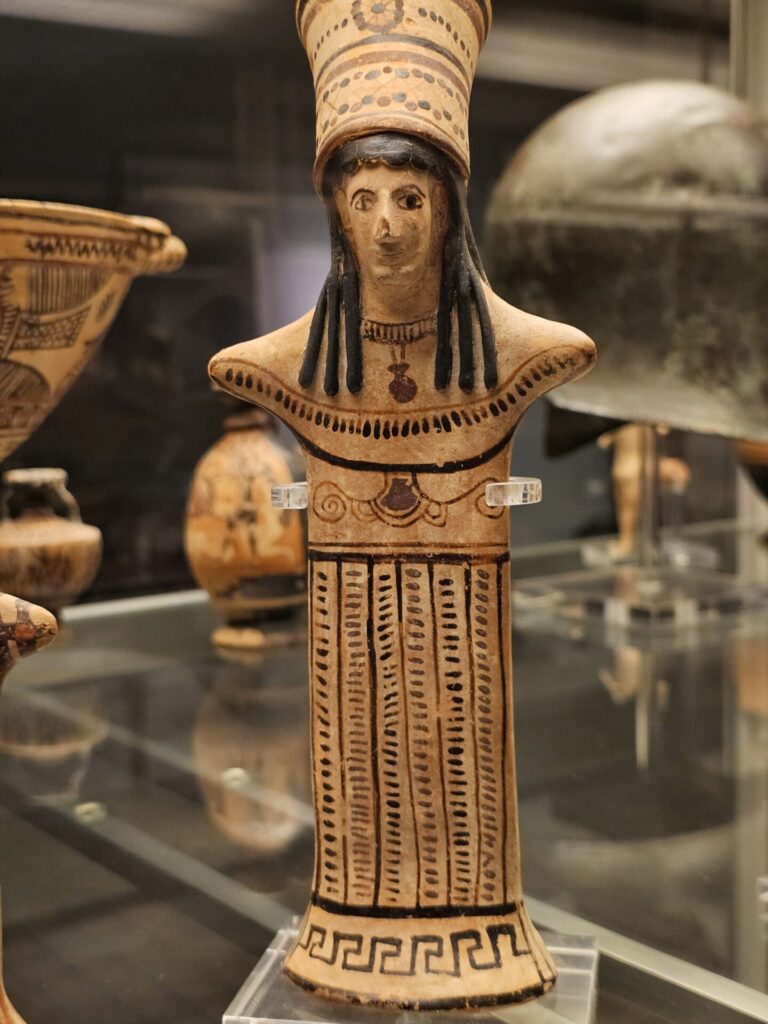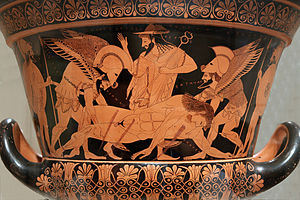Boeotia – the basics.
When it comes to art and ancient Greece Boeotia doesn’t get much of a discussion. However, there are some fine examples of this which I was able to see during my recent visit to the British Museum. In case you aren’t aware Boeotia was a region in central Greece, perhaps the most famous city there being Thebes (and on that you can listen to three podcast episodes I did on Thebes on my Ancient History Hound Podcast). In the map below you can see Boeotia sitting to the north east of Attica.
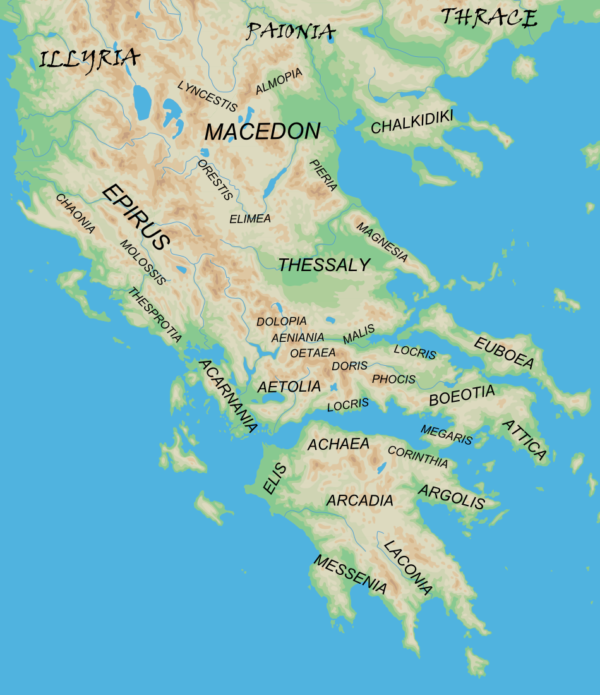
Boeotian Goddesses.
In Room 13 (a very underrated room in the British Museum – see here for floor plan) you can see four terracotta figurines of women sporting an unusual headress, this is known as a polos. It’s argued that these are goddesses. These date to the period 600-550 BC. The detail on the dresses is quite incredible, these were elite garments. Also note the necklaces each seems to be wearing.
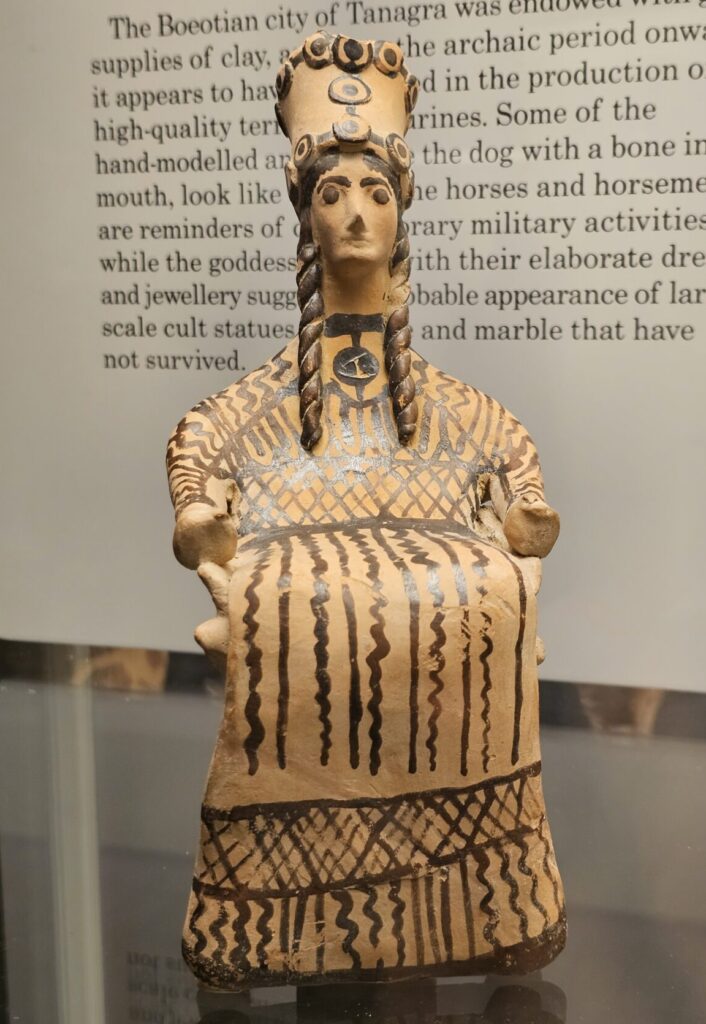


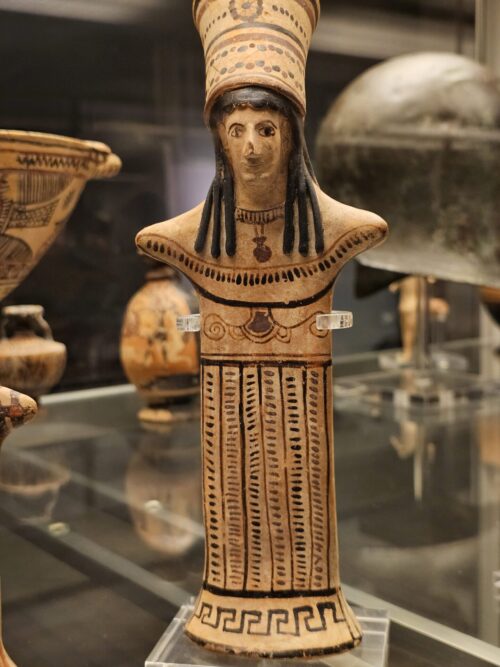
Boeotian women and baby.
Moving from the mythical to the every day, this terracotta piece dates to circa 450 BC and is of a woman holding her child. This may have been votive or funerary (I hope not!).
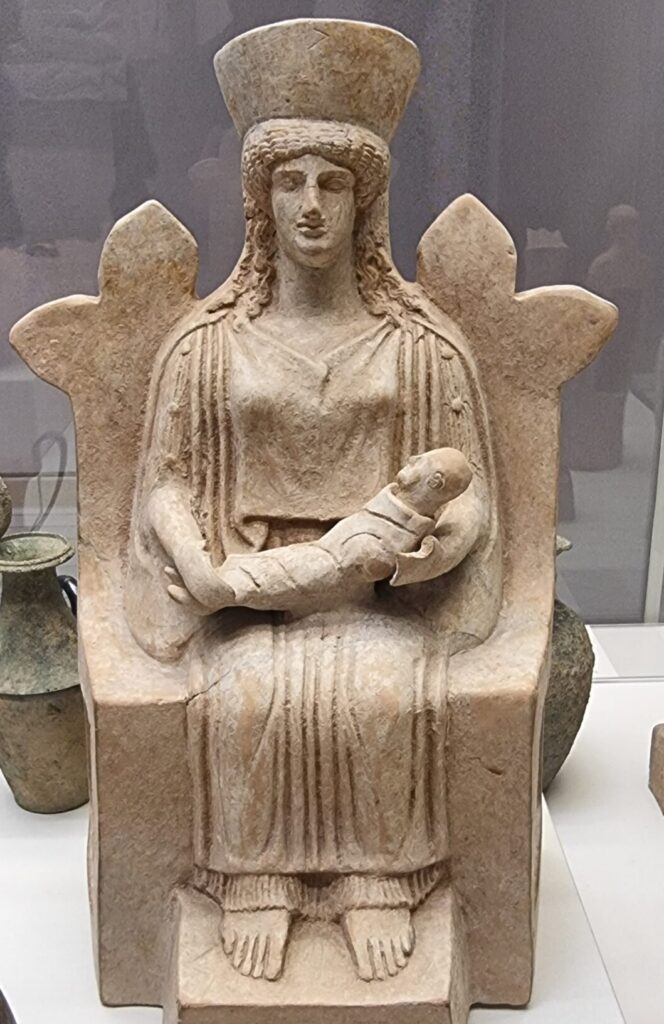
Boeotian geese – fancy a ride?
Not all art belonged to the formal, there was plenty of fun to be had. Here’s one such piece dating to circa 460 BC. It’s exactly what you see, a man riding a giant goose. This even retains its original pigment. Next to this you can also see a more standard form of travel, namely that of a horse.


